The ultimate guide to racing and training for cyclocross
Dabbling in some cyclocross racing could pay dividends to your technique and fitness on the road, and it's fun. Ian Field and Louise Mahé provide their tips for roadies looking to dip a toe into cyclocross
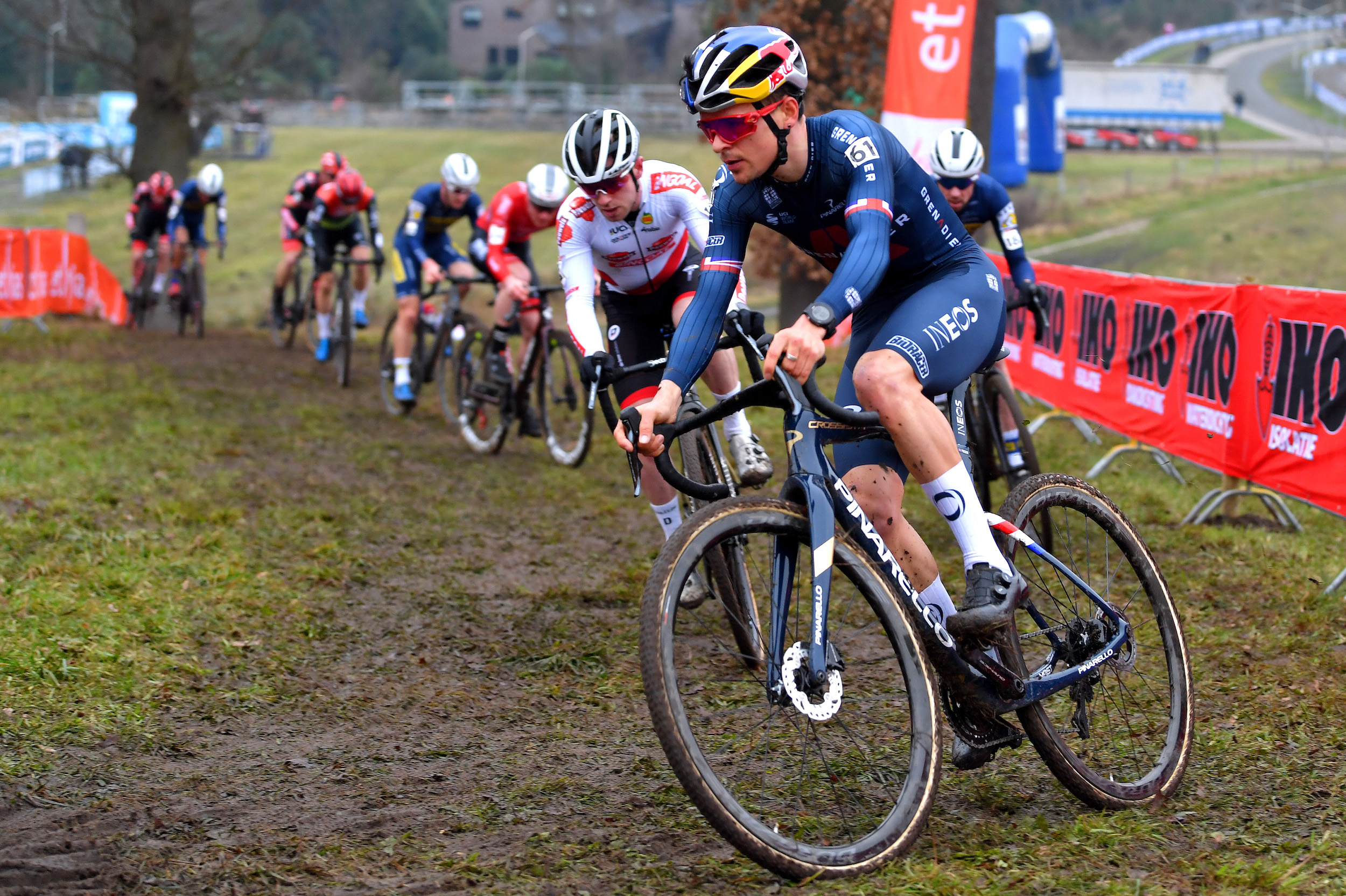

Riding muddy circuits in a local field certainly has its appeal. Cyclocross racing can dramatically improve your bike handling skills, and it’s an excellent way of maintaining intensity over the winter period. Plus, it’s fun.
“Loads of people ask me why I do ‘cross… it’s fundamentally about riding round the woods on my bike like I was when I was a 12-year-old, getting muddy,” says Ian Field – who just so happens to be good at it too, with five National titles to his name.
As director of VELD coaching, he’s got experience in training amateur athletes as well as competing at international level himself. No easy feat: “Comparing a ‘cross race to other race formats – if you look at heart rate, it’d look like a time trial. But if you looked at power, it would look more like a crit.”
Field says his training largely consists of 20 minute high tempo efforts and explosive sessions, plus training designed to recreate the difficulty presented by the need to dodge roots at rocks at 180bpm: skills at high intensity.
There’s a lot to consider – but Field has answered the most common questions and provided some training sessions for you to try, too.
What is a cyclocross race and how competitive are they?
Cyclocross races are typically 40 minutes to 1 hour long, they're run over short circuits with each lap being 1 to 3 kilometres long.
Competitors start in a bunch and spread out - the faster riders will complete more laps and commissars (or timing chips) keep a track of who is where. To spectators - it's not always clear who is placing where until the end.
The latest race content, interviews, features, reviews and expert buying guides, direct to your inbox!
Courses are run over mixed terrain - mud, trail, perhaps some concrete and with a few obstacles for competitors to negotiate - sand pits, logs and the like.
Cyclocross racing can be as competitive as you want it to be. You're all riding round in circles 'til the time is up, so even if you get lapped, you won't be more than a mile or so away from the winner. And no one but the commissaire has to know you're a lap back.
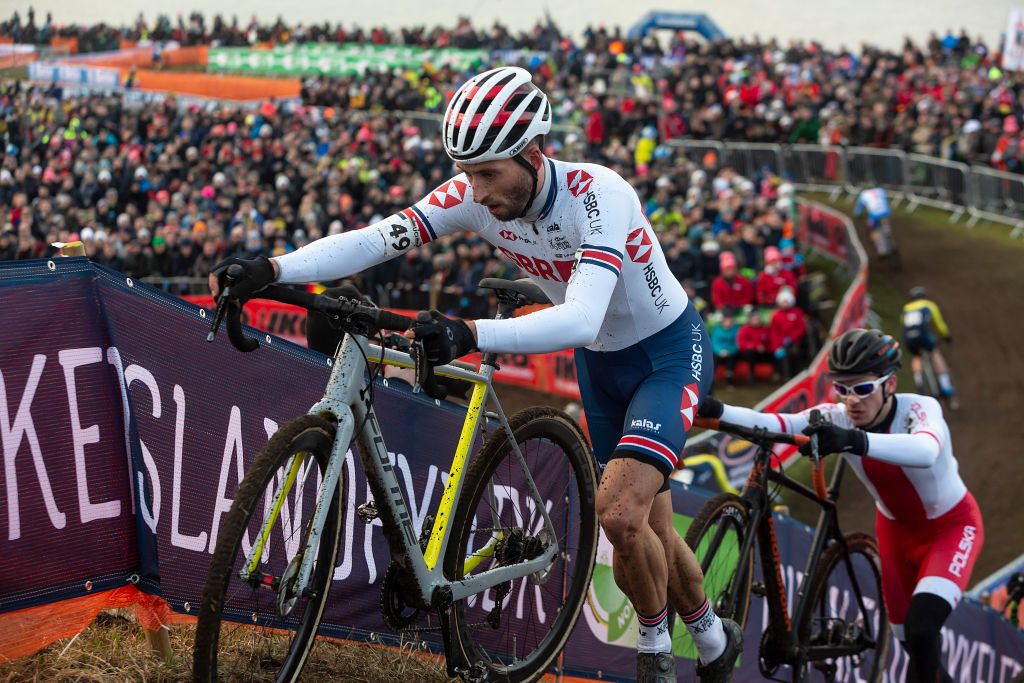
Ian Field representing Great Britain
“Races can be competitive, but there is always a wide range of abilities. You will soon find yourself settling in to a rhythm surrounded by similarly fit competitors," Field says.
There's no such thing as getting left behind, and as Field explains: “The best way to develop technique is to enter a race, take your bike and give it a go."
What sort of bike do you need to ride or race cyclocross?
Ok, so before you start training, you're probably going to need a bike.
You can enter a cyclocross race and ride on a mountain bike - but a cyclocross bike will be lighter and will give you the drop handlebars that you'll want to race in a more aggressive position.
A gravel bike is a good option, too - the difference between a gravel bike and a cyclocross bike is that the latter will be designed for narrower tyres, with a more racey geometry, but those factors aren't likely to bother beginners at all.
"The great thing about ‘cross is you can buy a really good bike without much money. [I'd recommend] 1x, disc brakes, whatever frame you can afford.
"Use the same set up as your road bike. Sometimes people have the saddle lower – but fundamentally your saddle height on your road bike is set up for the most efficient pedalling, and a 'cross race is still a bike race – so why change it?"
Pay attention to tyre pressure. If PSI is important on the road, it's important-er in the mud - Field says: "Anything over 25 is unnecessary, it might be faster on the flats, but a muddy corner will give you no grip and might cause a fall."
How do you train for cyclocross?
The best training sessions prepare you for racing - so when it comes to cyclocross, Field suggests you keep it in the natural habitat.
“The single best 'cross session is intervals off road. So my favourite session is a 20 minute warm up on the road, go to the local woods, set up a three to four minute circuit with some technical elements – and do race pace efforts.
“Perhaps lap on, lap off, so you get three to four minute efforts. Trying to handle a bike with 180bpm heart rate changes things. And it’s enjoyable!”

Zoe Bäckstedt battles the mud
We can’t all get outside every night of the week. Field designed a turbo session for the Sufferfest [since renamed Wahoo Systm] called ‘Ugly 15’, that uses short intense efforts ideal for cyclocross.
“I do a lot of pyramid workouts, with 15 on, 15 off, 30 on, 30 off, 45 on, 45 off. I used a set of SRM’s [power meter cranks] for a few races last year, and the graph is crazy – you’re never on the pedals that long, just sprinting to the next corner, bit of recovery – cross racing is very on off and dynamic,” he says.
When it comes to getting that time trial heart rate trace, he also suggests sessions in the lower intensities, such as 40 minutes zone three, with 20 second bursts every five minutes.
Long rides are less important, since the race is never going to be over sixty minutes.
Do I need to be good at running to race cyclocross?
Sometimes, during a cycloross race, you need to run. That leads amateur riders to strap on their trainers and head to the hills in the lead up to the season.
However, the longest run sections in a 'cross race are going to be less than a 30 seconds - so you're better off building running into your off-road cycling sessions.
"The big thing for me isn’t being a great runner, but not having it impact when I get back on the bike.
“You’ll know if you’ve not done enough 'cross sessions because you’ll jump back on the bike after a run section and have jelly legs. When you’re fit it’s almost like you haven’t done the run. Very rarely can you win a bike race from running quickly, so I wouldn’t worry about 5-10k running sessions, a lot of the top guys don’t run that much.”
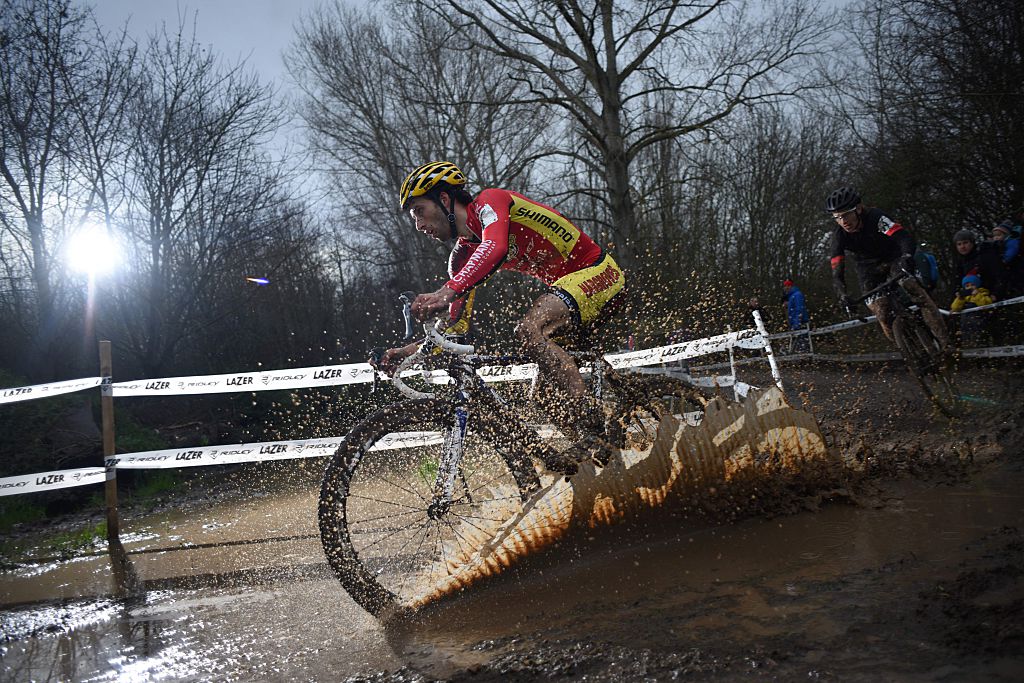
Only run when you have to in a cyclocross race
Getting to know the course with a recce is important to: “Your minimum speed is how fast you can run. As soon as you drop below that speed on the bike, it’s too late. Knowing where you need to get off is important – recce the course; courses change during the race but a recce helps.”
How do I master the mount/dismount?
Elephant in the room: to run, you’ll need to get off the bike, then back on it again – a skill that a lot of road racers turned cyclocross riders get wrong with hilarious consequences.
We’ve got a guide on the dismount/remount skills written by racer Louise Mahé below. Once you’ve read and understood, it’s all about practice.
“As a kid, during training, our warm up session was to ride round in quite a small circle, dismounting twice a lap – you were probably doing a dismount/remount 50 times in 15 minutes.
"Learn it, then do it lots, so it becomes second nature – otherwise you lose it as soon as you come to race.”
How do I deal with mud, sand and steep inclines?
Though summer cyclocross racing is becoming more and more popular, the traditional event takes place in the winter. Courses are designed in a way that means wet mud, sharp hills, and maybe even sand come into play.
“One of the best techniques [when riding through mud] is braking and pedalling at the same time – which no one thinks to do unless you’re a ‘cross rider. It’s the same as left foot braking in car racing – you keep the left foot on the throttle to keep power to the wheels, which makes the tyres grip, but if you need to slow down at the same time you use the other foot to brake.
"In ‘cross, you’re braking, but you’re also applying power to the rear wheel to keep traction. Often you loose grip if you freewheel on mud – so pedalling and braking is a little golden secret… though it’s not a secret any more!”
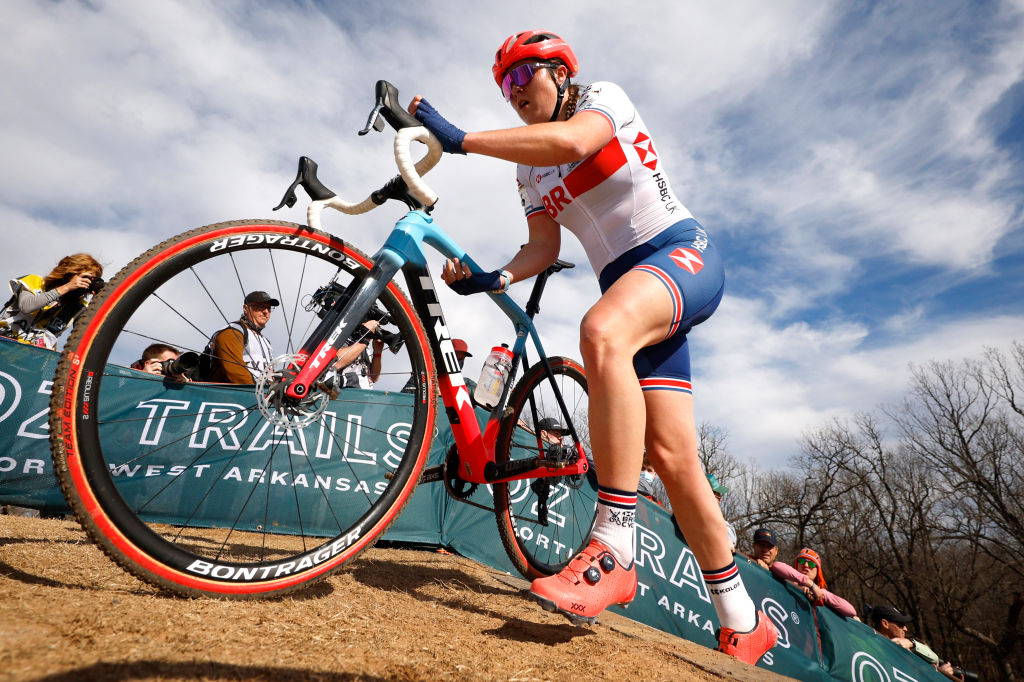
UK 2022 National Champion Harriet Harnden competed for Great Britain at the World Champs
Sand has a different quality. Here, it's about hitting it at speed and maintaining a high cadence.
"In sand, you’re going to slow down – and you don’t really want to be changing gear, so hit it with high cadence, nice high speed, by the time you exit you’ll be at a lower cadence and lower speed but you won’t have stalled. Hit it with a low cadence and you’ll slow right down and come to a stop.”
The gradients found off-road are very different to those you’ll meet on the road. Shorter, yes – but steeper. Here, there’s no clever trick- just practice.
“A lot of it is body position with the bike, it’s not just leg strength. So the best thing is to go to a local park and practice those short, sharp, explosive efforts.”
Finally: don’t look at trees: “Look where you want to go. If you look at that tree – nine times out of 10 you’re going to hit it.”
Essential cyclocross techniques
Ready to have a go? You don't have to be well drilled in every technique to enter a cyclocross race. However, getting some practice in could make you a lot more competitive.
Racer Louise Mahé takes us through some of the essential skills which, when well practiced, can seriously speed you up in a cyclocross race...
Dismount and shouldering a cyclocross bike
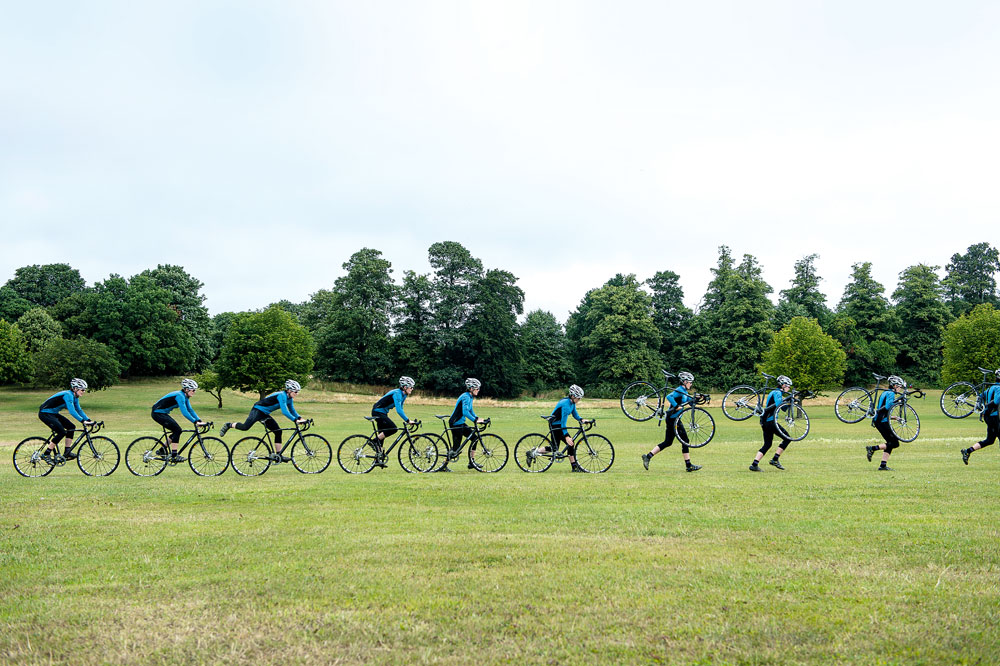
This is a skill only really found in cross, but being able to get off the bike smoothly is vital, as some terrain is too steep and muddy to cycle over, or there are obstacles to negotiate.
Here's how:
- Ensure you are holding the top of the bars, as this is the most stable position
- Sometimes you need to adjust your speed just before dismounting, so hold the hoods to use the brakes is necessary - but bear in mind that braking is taking away from the speed you begin running at
- As you come up to the point where you need to be off the bike, unclip and swing your lead leg over the back wheel
- Bring this leg in-between the opposite leg, which is still in the pedal, and the frame of the bike, and stride through as if you were starting to run
- Plant this lead leg on the ground while unclipping the opposite leg, then bring it down to follow through and continue running
- Once into your running stride, grab the down tube, midway along, with the hand nearest the bike, and lift it up onto your shoulder in one fluid motion
- The top tube of the bike should rest in the groove between your neck and shoulder
- To hold it in place as you run, hook your arm through the frame and under the down tube, while you hold onto the drop of the bars on the opposite side
Descending on a cyclocross bike
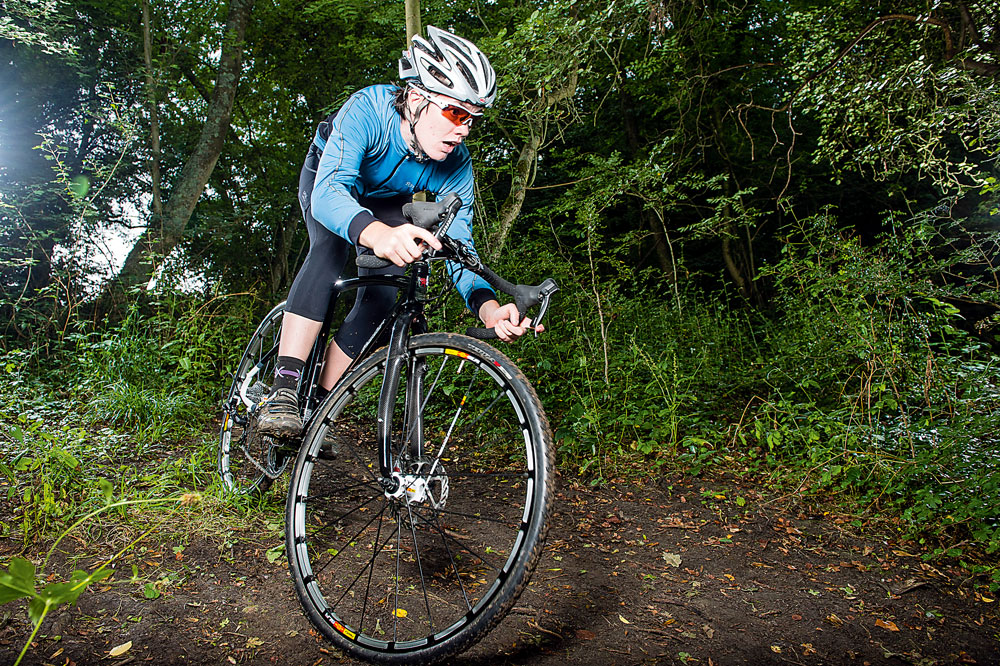
Coming to a steep downhill when off-road can be nerve racking initially, but try to stay relaxed and go with flow.
Here's what you need to do:
- Keep your brakes covered, which for people with small hands may mean getting on the drops in order to reach them, so you can adjust your speed easily
- Bring your weight back slightly as this will prevent you going over the bars on steeper downhills and give greater control for manoeuvring
- Look at where you want to go. It may seem obvious but it’s easy to look at the massive tree you want to avoid, and in doing so you’ll inevitably drift towards it. Keep your eyes on the terrain ahead to give you time to prepare for it
- If you need to control your speed try to use both brakes together, or the back one mainly, as grabbing a handful of front brake could send you over the bars
- If you feel the wheels locking and starting to slide, let the brakes go as this will give you more traction so you can regain control
Bunny hop a cyclocross hurdle
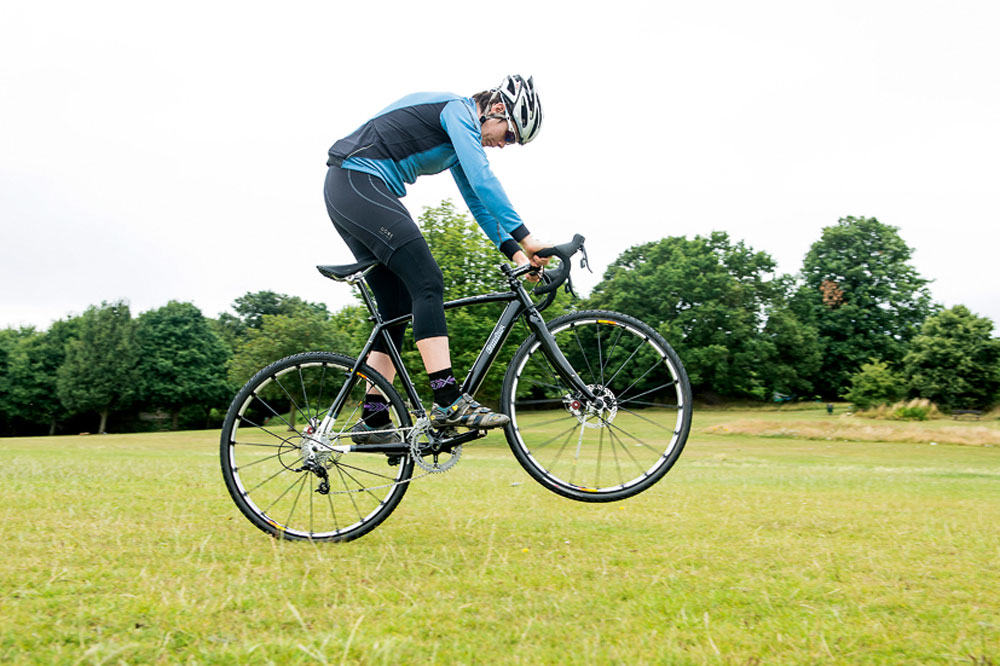
This is a cross skill that takes some practice and is not always needed, but when done well it is significantly quicker to bunny hop a log or obstacle than to dismount and run over it. Many think this is because it is faster to ride than run, but you actually bunny hop at running speed. The advantage is gained after this, when you don’t have to waste time getting back on the bike.
It might sound intimidating, but follow these steps for a perfect bunny hop:
- When coming up to the object you wish to bunny hop, it is often best to have your hands on the tops again for stability
- Begin by straightening your arms out, and shifting your body weight right back, pushing the bike forwards, pivoting the front wheel upwards, while keeping your pedals level in a horizontal position
- Once your front wheel is up, compress your arms and legs, bringing you closer to the bike
- Once in the air, push down on your pedals and transfer your body weight forward, bringing your back wheel up in the air. As this occurs, straighten and push down with your arms again to regain contact between the front wheel and the ground - do this rapidly if you have two or more obstacles in quick succession
Line choice in a cyclocross race
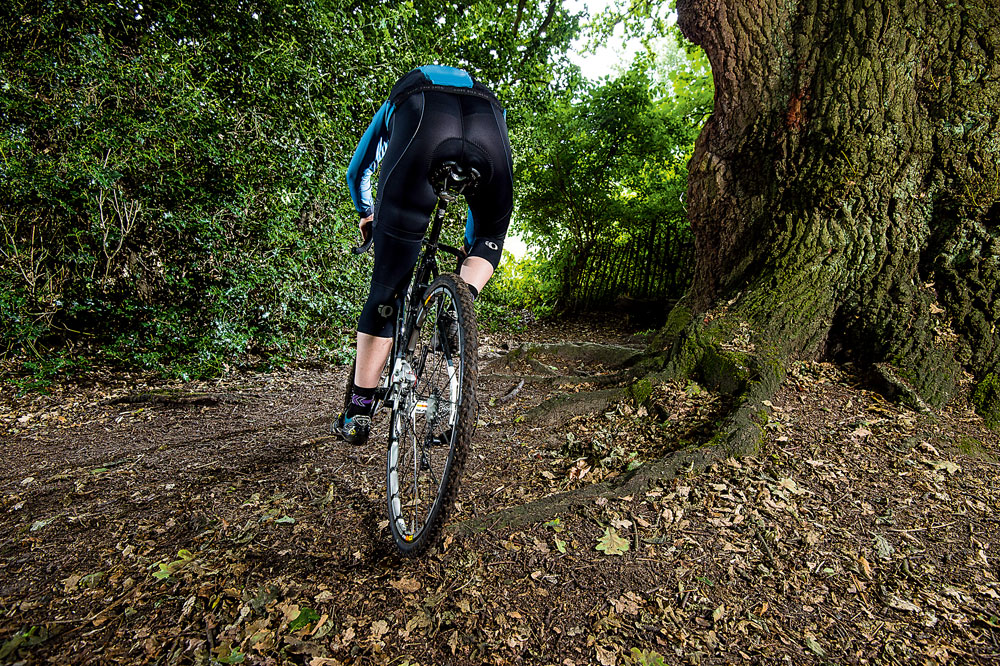
Often in cyclocross there are a few different line options for the same bit of trail. Choosing the right one is important as hitting a root or rut at the wrong angle can bring you to a standstill or cause you to have a bit of a spill, while nailing the right line can send you sailing through a technical section with ease. Looking ahead at the terrain is vital. If you’re racing you should always recce the course to give yourself an idea of what’s ahead.
However, be aware that lines often change as races progress so keep an open mind, think for yourself and don’t just follow the rider ahead. As you build up knowledge from riding off-road on a cross bike, you’ll learn how your bike handles over different terrain and in varying conditions. Sometimes, when dry, a line is easily rideable, yet as soon as it gets wet it becomes treacherous. As your experience and confidence grows, however, you will learn to anticipate this and how to deal with it.
Cornering a cyclocross bike
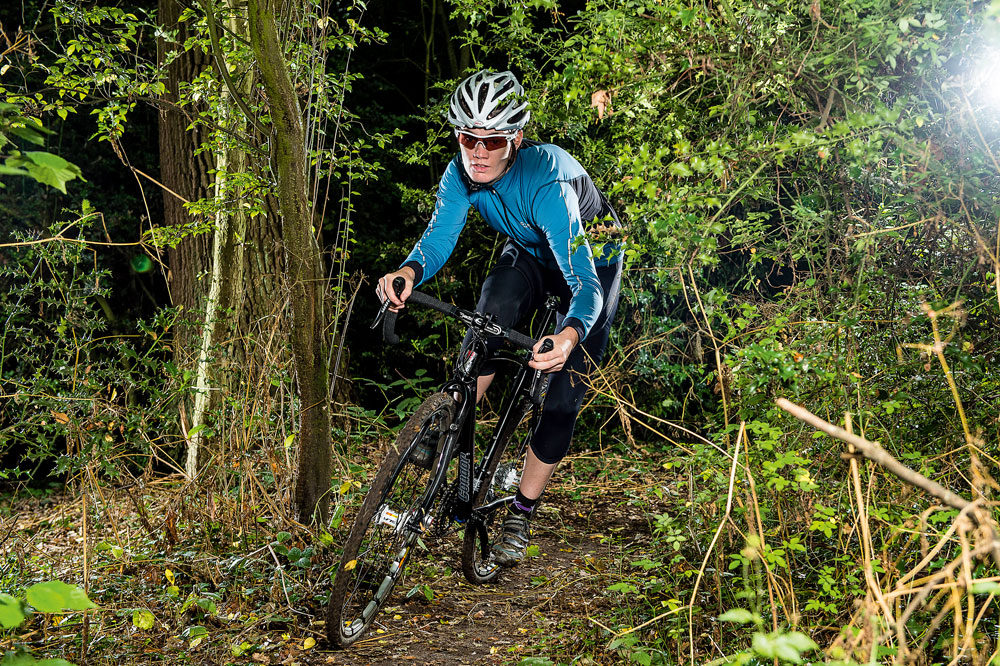
When riding cross you’re often hitting corners at much lower speeds than on the road. This enables you to pedal through some corners, and in doing so you’ll find greater grip on muddy terrain. Obviously, for sharper or faster turns, which you cannot pedal through, employ the same strategy as you would on the road, keeping your inside pedal up and pushing down through the outside, straightened leg to increase grip.
Any adjustment of speed should be done before the corner, as hitting the brakes as you turn will often cause you to slip out. As you hit the apex of the corner, dipping the inside shoulder will help transfer weight through the bike and into the tyres, aiding grip as you turn, and lowering your centre of gravity, which will also give greater manoeuvrability to whip the bike around the corners.
Michelle Arthurs-Brennan the Editor of Cycling Weekly website. An NCTJ qualified traditional journalist by trade, Michelle began her career working for local newspapers. She's worked within the cycling industry since 2012, and joined the Cycling Weekly team in 2017, having previously been Editor at Total Women's Cycling. Prior to welcoming her first daughter in 2022, Michelle raced on the road, track, and in time trials, and still rides as much as she can - albeit a fair proportion indoors, for now.
Michelle is on maternity leave from April 2025 until spring 2026.
